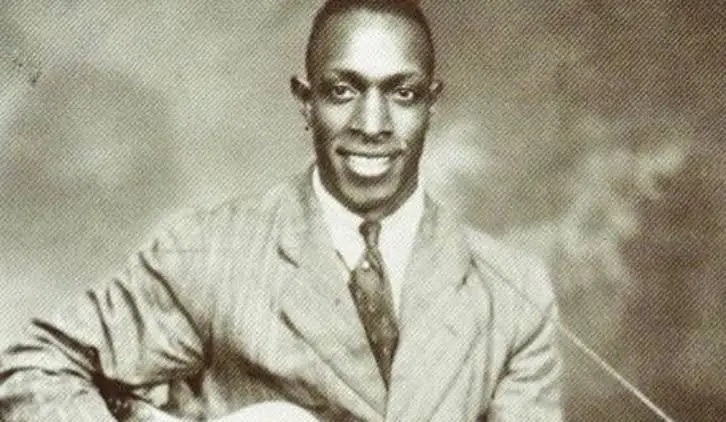Peetie Wheatstraw: The Devil’s Son-in-Law and King of the Blues
Peetie Wheatstraw, born William Bunch on December 21, 1902, in Ripley, Tennessee, was one of the most colorful and influential figures in early blues history. Known by his dramatic stage monikers “The Devil’s Son-in-Law” and “The High Sheriff from Hell,” Wheatstraw combined a powerful vocal delivery, distinctive piano style, and mystique-laden persona to become a legendary presence in the urban blues scene of the 1930s and early 1940s.
Early Life and Influences
William Bunch grew up in the segregated South during a time of economic hardship and racial oppression. He taught himself to play the piano as a young boy, developing a rhythmic and percussive style that drew from the boogie-woogie and barrelhouse traditions. By the time he was a teenager, Bunch was performing in local juke joints and parties under the name Peetie Wheatstraw—a nickname he likely borrowed from African American folklore.
Wheatstraw moved to East St. Louis in his twenties, a hub for African American migration and a lively blues scene. His hard-edged lyrics and devilish persona quickly made him a popular and enigmatic figure.
Rise to Fame
In 1930, Peetie Wheatstraw made his recording debut for Vocalion Records. Over the next decade, he recorded prolifically—often with prominent musicians like Lonnie Johnson and Kokomo Arnold. His output included hundreds of songs that resonated with the African American working class. Tracks such as “Don’t Feel Welcome Blues,” “Crawling King Snake,” and “Tennessee Peaches Blues” showcased his braggadocious lyrical style, streetwise commentary, and gritty humor.
Wheatstraw’s piano playing was forceful and rhythmic, often driving the songs with a punchy left hand and quick right-hand flourishes. He became a major influence on later urban blues musicians, including the likes of Champion Jack Dupree and even early rock-and-rollers.
The Myth and Persona
What truly set Peetie Wheatstraw apart was his cultivated image as a supernatural figure. He routinely referred to himself in songs as the “Devil’s Son-in-Law” and “High Sheriff from Hell,” invoking themes of danger, mischief, and the occult. This larger-than-life persona gave him a mystique that attracted listeners during a time when folklore and superstition were deeply rooted in African American culture.
These titles weren’t just gimmicks—they were part of a carefully constructed narrative that made Wheatstraw a mythical figure in his own right. His fans saw him as a man who straddled the boundary between this world and the next, giving his music a haunting resonance.
Tragic Death
Peetie Wheatstraw’s life came to a tragic and sudden end on December 21, 1941—his 39th birthday. He died in a car crash in East St. Louis while riding in a stolen vehicle driven by his friend. The crash claimed the lives of all three occupants. Ironically, the dramatic circumstances of his death only fueled his legend, with some fans speculating that the Devil had come to collect his son-in-law.
Legacy
Though he never achieved the mainstream fame of bluesmen like Robert Johnson or Muddy Waters, Peetie Wheatstraw’s impact on blues music is profound. His recordings helped shape the urban blues style that would dominate the post-war years. His brash storytelling, unique persona, and prolific output left a blueprint for artists who followed.
Today, Wheatstraw’s music continues to be reissued and studied by blues historians and enthusiasts. His mythos lives on, reminding us of a time when blues artists were not only musicians but storytellers, tricksters, and icons in their own right.


Comments are closed